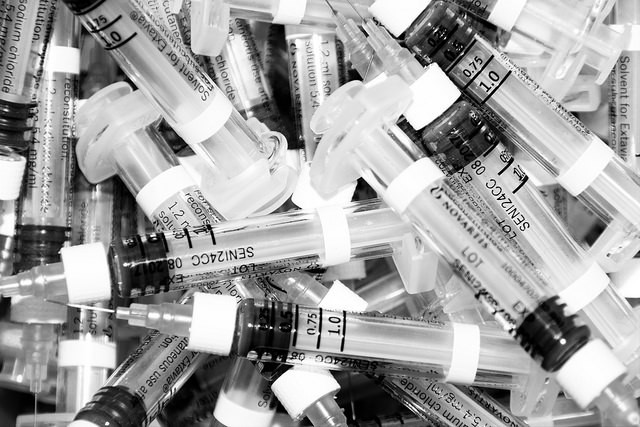
The California Department of Public Health (CDPH) has approved the first-ever Orange County Needle Exchange Program (OCNEP). Starting on February 20, the exchange will be held every Saturday for the next two years at the Civic Center in Santa Ana.
Needle exchanges are public health programs where people who inject drugs can safely dispose of their used syringes and access clean injection supplies. “The statistics for HIV infections attributable to injection drug use are twice as high where we are operating in Santa Ana in comparison to the rest of the country,” says Kyle Barbour, a UC Irvine Medical student who helped create the organization. “20 percent of HIV cases are associated with injection drug use, where as nationally it’s about nine or 10 percent.”
According to the CDPH, there’s significantly less access to sterile syringes in Orange County than in other California counties of comparable size. Additionally, there’s also evidence of a sizable population of injection drug users in OC who are reusing and sharing potentially contaminated injection equipment as a result of the scarce supply of sterile needles and syringes.
Barbour believes the statistics are as high as they are in OC because of the county’s denial of such drug use and addiction, thus resulting in a lack of safety programs. “You would expect to see numbers like this in places were people are marginalized and oppressed,” he says. “But if people have access to means of protecting themselves, they will do it,” Barbour says. “No one wants to use dirty needles.”
But intravenous drug users are not the only ones who benefit from a needle exchange program. By providing a safe place to dispose of syringes, needle exchanges also protect the community by reducing the appearance of syringes found in public areas, making our county (and thus our home) a more sanitary living space for everyone.
“What we have seen from other needle exchange programs is that it actually helps reduce Public Safety injuries,” says Diane Goldstein, a member of the Law Enforcement Against Prohibition (LEAP). “Syringe exchange programs are the most researched public health policy that’s had overwhelming results in the reduction of disease and addiction, and in the long term that affects public safety,” says Goldstein.
According to Barbour, one of the best features of a needle exchange program is that it costs little to nothing to run a fully functional facility. “It also saves money because it lessens the potential to get stuck with dirty needles when you’re dealing with people who are using,” Goldstein says.
Barbour and Goldstein hope Santa Ana’s program can expand countywide. “What we need to do is make certain that people through out the whole county know that it’s available,” says Goldstein. “This isn’t just a Santa Ana problem.”
Despite the astounding results that needle exchange programs have yielded all over the world, these types of programs are often thought of as curriculums that support the use of illicit drugs, argues Goldstein. “People should not see the needle exchange program as enabling illicit drug use,” she says. “Instead it should be seen as a way to reduce the harm associated with the drug user and the entire community.”

